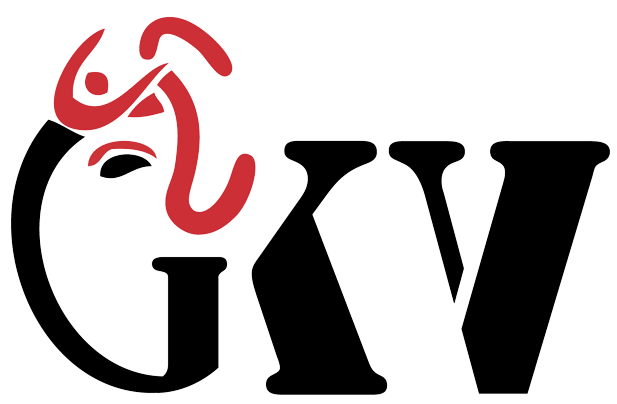Functional Testing is a type of software testing that focuses on verifying the functionality of a software application. It ensures that the software behaves according to the specified functional requirements.
In this Blog, we will provide information regarding the Functional Testing approach alongside its types, the commonly used techniques, and the available tools that will assist you in performing functional testing.
What is a Functional Testing Approach?
Definition of Functional Testing
Functional testing is a type of software testing that validates the functionality of a software application. It involves testing the software against the functional requirements to ensure that it meets the desired outcomes. The primary goal of functional testing is to verify that the application performs as intended, providing a seamless user experience.
Functional testing is a software testing method that determines the performance of a software application in a specified area. It embraces the functionality document of an application to ascertain that the set objectives are achieved. In its simplest terms, functional testing aims to ensure that the system works as planned and interacts with the application’s users without any problems.
Importance of Functional Testing in Software Development Life Cycle Process
Functional testing plays a critical role in software development for several reasons:
- Ensures Software Quality: Its purpose is to check if the software that has been developed meets the functional requirements and thus provides quality output.
- Improves User Experience:It resolves functional problems and assures that the user is taken through an enjoyable and simple user interface.
- Reduces Costs:Detecting issues at an early stage helps lower costs that could have been escalated if issues were detected in further stages of development.
- Builds Customer Trust: The customers will have trust in the product since they will receive the application as bug-free and this will also help in increasing their satisfaction.
- Without functional testing done, software applications may not function to the satisfaction of the users which results in negative reviews and losses to the business.
Functional Testing vs Non-Functional Testing
Key Differences Between Functional Testing and Non-Functional Testing
Parameter | Functional Testing | Non- Functional Testing |
Purpose | It looks at what the system does or is capable of (for example, the features, the workflows). | Evaluateshow the system performs (e.g., speed, scalability, security). |
Focus | Ensures that the software works as it is supposed to and meets all functional requirements by conducting all functional tests. | Determines the software’s performance, usefulness, and dependability. |
Testing Techniques | Black-box,white-box functional testing. | Performance testing, stress testing, and compatibility testing. |
When It’s Done | It is performed during the development process of the project to check features or functions work correctly. | Non-functional testing done after conductingfunctional testing to check the system performing well under various conditions. |
Tools Used | Selenium automation tool,TestComplete,QTP. | JMeter,LoadRunner,AppDynamics. |
Examples | Login functionality, search functionality, payment process are some examples of functional testing | Load testing, Security testing, usability testing, Performance testing are some examples of non-functional testing. |
Approaches to Functional Testing
The functional testing approach has to be structured for it to be effective. Here are the main methods.
Manual Testing Approach
In manual testing, a QA tester executes the test cases. They interact with the system under test and collect results to check for changes from expected.
Use Cases: Best suited for exploratory testing and in any scenario that changes.
Advantages: Attracts a detailed focus on the issues of UI design and usability.
Challenges: It is error prone and can take too long.
Automated Testing Approach
Automated testing is performed with the aid of specialized software tools which executes the test cases and checks results against expected ones. It is easier and more accurate for repetitive tasks.
- Benefits: Makes testing faster and easier, which means more tests can be done.
- Tools: Selenium, TestComplete, and Appium are popular Automation tools.
- Limitations: Initial setup can be complex and costly
What are the Benefits of Combining Functional Testing with Automation?
By integrating automation into functional testing, organisations can achieve the following potential business benefits:
- Greater Productivity:Functional automation tests can be run more often and faster than manual tests which leads to time savings.
- Consistency: Automation testing ensures that tests are performed consistently which reduces the overall human error ratio.
- Reduced Operational Costs:Automation is expensive to set up initially, but in the long run, it is very economical as it saves a lot of time and resources.
- Scalability: Functional automation tests can be expanded easily to include additional features and other relevant scenarios.
Many companies use QTP, TestComplete, and Selenium for automated functional testing purposes.
Types of Functional Testing Techniques
Functional testing verifies that the software applications perform the required tasks in accordance with the guidelines. Now let’s look into some of the crucial techniques of functional testing which help ensure software quality:
White Box Testing
White box testing is a type of testing that examines the internal code structure of the application. The testing teams look at the source code and verify that all the paths and conditions are tested. This testing technique requires strong technical knowledge and it is starkly at the code level and helps in issue enumeration.
Black Box Testing
Without seeing the internal aspects of software, QA teams conduct functional testing which is known as black box testing approach. Here, code examination is not performed, only the input and output is focused on. This testing technique is the traditional way of working with the software system for end-users, where they do not have to go through complicated processes.
Boundary Value Testing
Boundary value testing helps verify the procedures which applications perform on extreme values. QA Testing teams basically check for the functionality at the lower limits and upper limits of ranges of data. Test automation tools usually help with functional tests, especially for these tests as they can be done more rapidly.
Decision-Based Testing
In Decision Based Testing, Do note that conditions and scenarios vary software paths of functioning, QA Testing teams validate that the application works properly in all scenarios. This type of non-automated functional testing approach makes sure that complex business logic is adequately handled.
User-Based Testing
User Based Testing concentrates on specific activities that can be performed with the software application. The QA Team performs functional testing from the perspective of the user who would be using the system to ensure all specified functional requirements will be satisfied. This type of testing captures non-functional issues or problems that automated testing processes tend to overlook.
Ad-Hoc Testing
Ad-Hoc testing allows exploration in the absence of preset tests. The QA testing teams use their knowledge to try to solve the problem from an unorthodox point of view. This complements automated functional tests by providing an alternative solution to functional problems that may arise unexpectedly.
Examples of Functional testing and Non-Functional Testing
To demonstrate the difference between functional and non-functional testing, let us analyze some examples of each. The functional testing examples include unit testing, where a piece of software is tested for correctness of one of its parts, as well as integration testing, which looks at the interaction of the different modules of the program with each other. System testing also serves as an example, since it checks an entire software system against its functional requirements. These testing techniques serve to ensure that the features are working properly and meeting the user’s needs and expectations.
The non-functional testing includes performance testing which includes responsiveness of the software under various conditions. Also, security testing is non-functional testing as well as usability testing, which is the evaluation of the UI and user experience of the software. The examples used above highlight an important distinction: functional testing focuses mainly on verifying the defined functionalities, while non-functional testing is concerned with the workings of the software in its intended environment. It is clear that both types of testing need to be conducted in order to achieve a functional and reliable user-friendly product.
Testing Tools for Functional Testing
Here’s a list of the most popular functional Testing Tools in 2025:�
- Selenium automation tool
- TestComplete
- QTP (QuickTest Professional)
- Katalon Studio
- Cucumber
- Ranorex
- SoapUI
- Appium
- Tricentis Tosca
- Watir
How to Choose the Right Testing Tool
Considerations for Picking the Best Testing Tool:
- Getting Additional Information Regarding Testing Needs & Type:
Validate whether you require functional testing such as [unit testing , regression testing, smoke testing] or need to perform non-function testing, [e.g.,usability testing, Performance testing]and ensure that you get the appropriate tool for your testing. - Automation Support & Compatibility:
Select the appropriate automated functional testing tool that does automations independently and simultaneously integrate with your software development environment, for example, Selenium automation tool for regression or integration testing. - Determine Ease of Use and Budget:
Select the cost friendly and long-term maintenance appropriate Testing tool which allows for both manual and automated testing.
Determine Scalability & Reporting:
The Testing tool selected should be project specific and address the level of complexity needing to be reported, which issues need to be fixed, and make sure the necessary functional requirements are met.
GKV Software Solutions: Functional Testing & Test Automation Expert
Looking to Optimize Your Functional Testing Approach?
GKV Software Solutions is a Best Software testing service provider of functional testing known for its competent practical testing that ensures the reliability of software through test automation processes as well as utilising functional testing tools. Their specialisation include black box testing, white box testing, unit testing, regression testing, and integration testing to verify functional requirements.
With a structured functional testing approach, they use both manual testing and automated functional tests to enhance software quality. GKV Software Solutions uses advanced automation testing tools which assist in accurately performing functional testing and guarantees software applications are robust and high performing.
Conclusion
Functional testing is an important component of software development process, it ensures that software applications meet their intended requirement and give a smooth experience to end users. Knowing how to perform the functional testing, including using the right testing tools and functional testing techniques, will ensure that the software testing process is done properly. Achieving in delivering a user friendly reliable application, either through manual testing or automated functional testing, the goal remains the same to provide value to the business and the users.

